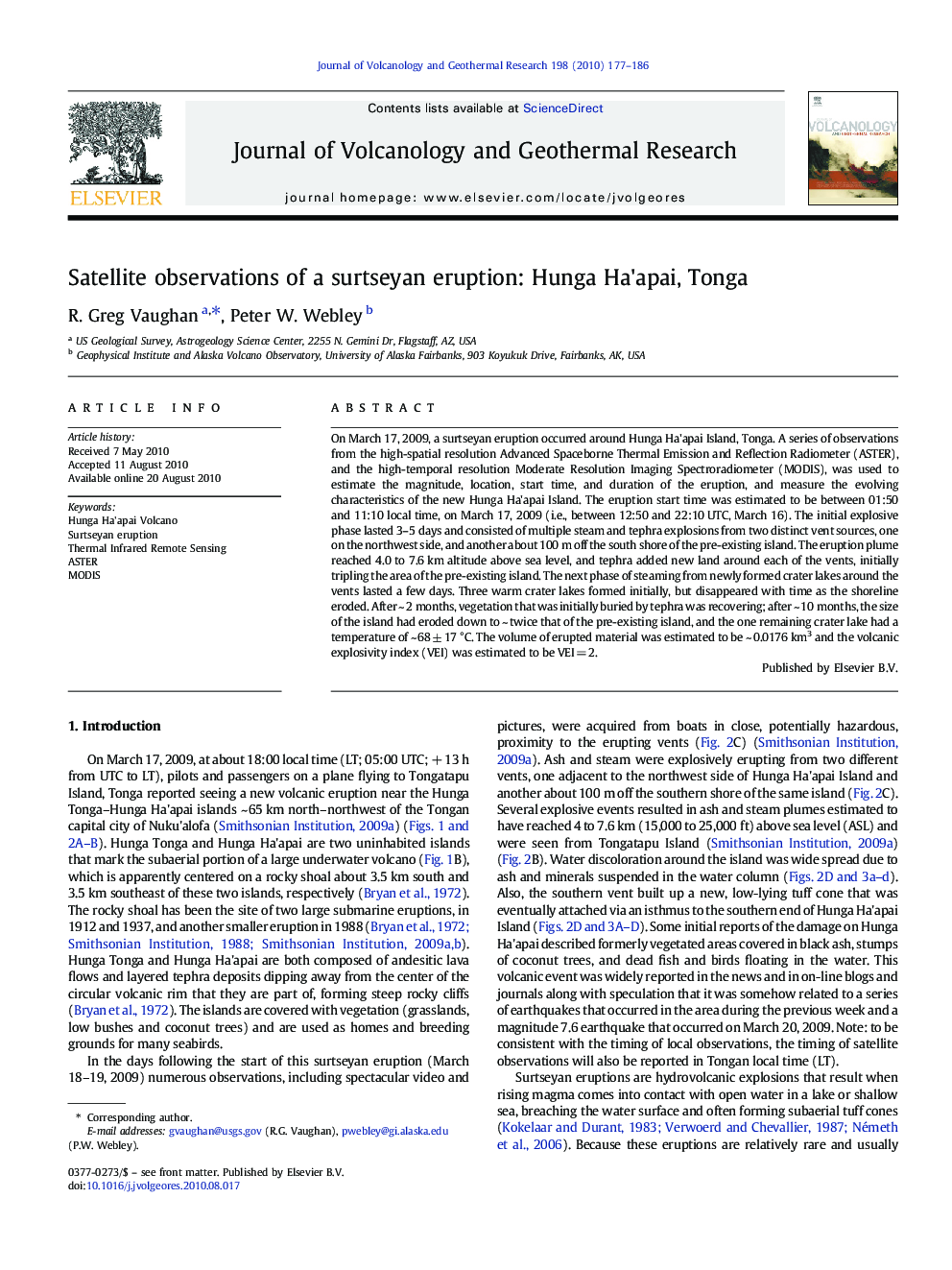| Article ID | Journal | Published Year | Pages | File Type |
|---|---|---|---|---|
| 4712898 | Journal of Volcanology and Geothermal Research | 2010 | 10 Pages |
On March 17, 2009, a surtseyan eruption occurred around Hunga Ha'apai Island, Tonga. A series of observations from the high-spatial resolution Advanced Spaceborne Thermal Emission and Reflection Radiometer (ASTER), and the high-temporal resolution Moderate Resolution Imaging Spectroradiometer (MODIS), was used to estimate the magnitude, location, start time, and duration of the eruption, and measure the evolving characteristics of the new Hunga Ha'apai Island. The eruption start time was estimated to be between 01:50 and 11:10 local time, on March 17, 2009 (i.e., between 12:50 and 22:10 UTC, March 16). The initial explosive phase lasted 3–5 days and consisted of multiple steam and tephra explosions from two distinct vent sources, one on the northwest side, and another about 100 m off the south shore of the pre-existing island. The eruption plume reached 4.0 to 7.6 km altitude above sea level, and tephra added new land around each of the vents, initially tripling the area of the pre-existing island. The next phase of steaming from newly formed crater lakes around the vents lasted a few days. Three warm crater lakes formed initially, but disappeared with time as the shoreline eroded. After ~ 2 months, vegetation that was initially buried by tephra was recovering; after ~ 10 months, the size of the island had eroded down to ~ twice that of the pre-existing island, and the one remaining crater lake had a temperature of ~ 68 ± 17 °C. The volume of erupted material was estimated to be ~ 0.0176 km3 and the volcanic explosivity index (VEI) was estimated to be VEI = 2.
Research Highlights► On March 17, 2009, a surtseyan eruption occurred around Hunga Ha’apai Island, Tonga. ► There were no known seismic or thermal precursors to this eruption. ► Satellite observations estimated the magnitude, timing & evolution of the eruption. ► Past satellite observation indicate there may have been unnoticed precursor activity. ► Future satellite observations may help forecast volcanic hazards in remote locations.
